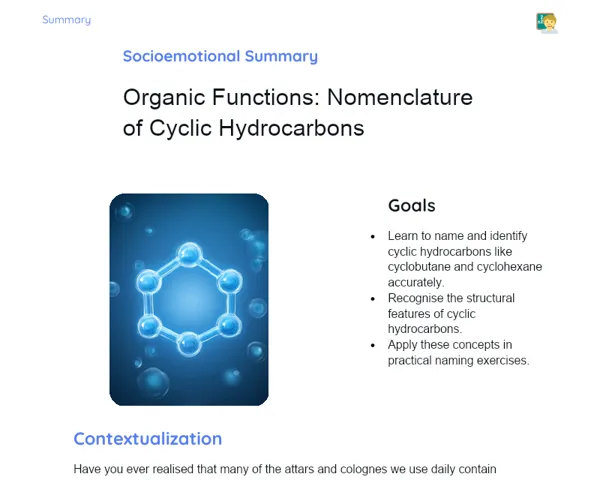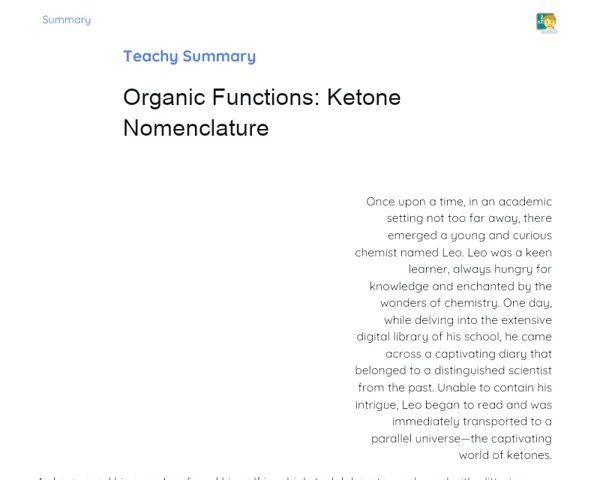Objectives
1. 🎯 Understand the key principles of Proust's Law, which states that composite substances are always created from their components in specific mass proportions.
2. 🎯 Apply Proust's Law in various practical and theoretical scenarios, including the calculation and experimental verification of stoichiometric proportions in chemical reactions.
Contextualization
Did you know that Proust's Law, commonly known as the Law of Definite Proportions, was one of the earliest fundamental laws of modern chemistry proposed by the French chemist Joseph Proust in 1794? This groundbreaking discovery changed our understanding of how chemical substances are formed and plays a critical role in many practical applications, from cooking to food safety and forensic analysis. By mastering these concepts, you'll not only do better in chemistry but also gain a deeper appreciation for the world around you!
Important Topics
Law of Definite Proportions (Proust's Law)
Proust's Law, outlined by French chemist Joseph Proust, asserts that a composite chemical substance is consistently formed by combining its constituent elements in fixed and defined mass proportions. This means that regardless of how the substance is sourced, the mass proportions of its composing elements remain constant.
-
This law is fundamental for a basic grasp of chemistry, allowing predictions about the amounts of substances produced or consumed during chemical reactions.
-
The application of this law is crucial in many fields, including analytical and environmental chemistry, where accurate identification of chemical compounds is essential.
-
Proust's Law is also significant in industries, particularly in the manufacture of chemicals and pharmaceuticals, ensuring the consistency and quality of the products.
Stoichiometric Proportions
Stoichiometric proportions refer to the quantitative relationships between reactants and products in a chemical reaction. These proportions are defined by Proust's Law and are vital for the calculation of chemical reactions, helping predict the amount of products formed or the reactants required.
-
A sound understanding of stoichiometric proportions empowers chemists to enhance reaction efficiency, limiting waste and maximizing the yield of desired products.
-
These proportions find application in various real-world scenarios, such as designing industrial chemical processes and preparing medications, where accuracy in quantities is critical for the effectiveness of the final product.
-
Learning about stoichiometric proportions also fosters practical mathematical skills since it often involves calculations and unit conversions.
Applications of Proust's Law
Proust's Law transcends academic boundaries and has significant practical implications across diverse sectors. In cooking, where precise ingredient ratios are key to a recipe's success, and in forensic science, where substance analysis assists in determining causes of death, Proust's Law remains fundamental.
-
In cooking, grasping the right proportions of ingredients ensures the consistency and quality of prepared dishes.
-
In forensic sciences, analyzing substances in biological specimens relies on Proust's Law to identify the presence of drugs or toxins, which is vital in criminal investigations.
-
Proust's Law is also essential in material production and the development of new technologies, guaranteeing precision and reliability in processes.
Key Terms
-
Proust's Law: Asserts that a composite chemical substance is formed by combining its components in fixed mass proportions.
-
Stoichiometric Proportions: Quantitative relationships between reactants and products in a chemical reaction, defined by Proust's Law.
-
Chemical Compound: A substance created through the combination of elements in fixed proportions, as per Proust's Law.
For Reflection
-
How can insights into stoichiometric proportions lead to reduced waste and enhanced efficiency in industrial processes?
-
In what ways does the application of Proust's Law in diverse contexts, such as cooking and forensic medicine, highlight the universal nature of chemical principles?
-
Why is it important to learn about fundamental laws of chemistry, like Proust's Law, beyond purely academic applications in today's world?
Important Conclusions
-
We reviewed Proust's Law and how it establishes the foundation for understanding that composite substances are made up of elements in fixed mass proportions.
-
We discussed Proust's Law's practical implications across various fields, from cooking to forensic science, showcasing the importance of these chemical concepts in everyday life and other disciplines.
-
We examined how stoichiometric proportions are crucial for predicting and controlling chemical reactions, which is vital for industrial, scientific, and technological advancements.
To Exercise Knowledge
- Prepare a cake recipe but try to adjust the proportions of the ingredients and observe how it changes the final product. 2. Conduct a simple experiment by mixing vinegar and baking soda in different ratios, measuring the amount of gas produced to verify Proust's Law. 3. Select a household chemical product and investigate its ingredients. Try to estimate the possible proportions of the elements based on the product's function in accordance with Proust's Law.
Challenge
Chemical Detective Challenge: Create a scenario where a poison is involved. Using the chemical clues found, such as the ratios of elements in biological samples, determine the poison using Proust's Law and other chemical principles we've studied.
Study Tips
-
Regularly revise stoichiometric proportions, practicing with various examples to deepen your understanding of the concepts.
-
Watch educational videos demonstrating the real-world application of Proust's Law in different sectors to visualize the concepts in action.
-
Form study groups to discuss and tackle problems related to weight laws, sharing various viewpoints and problem-solving strategies.



